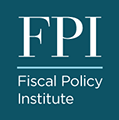Recent Work
The State Budget Outlook
Download Full Report Executive Summary New York State’s Division of the Budget (DOB) recently published its mid-year budget update, which forecasts considerable budget gaps in the years ahead: an apparently staggering $26.8 billion gap over the next four years before even accounting for the impending losses of federal funding under the so-called “One Big Beautiful Bill Act” (OBBBA). At first glance, this seems like an insurmountable challenge. If the State is facing dramatic deficits before it loses federal funding, then a statewide fiscal crisis must be around the corner. As [...]
New York’s Millionaires Will Get a $12 Billion Federal Tax Cut Next Year
Download PDF On July 4, 2025, President Donald Trump signed into law the federal reconciliation legislation known as the “One Big Beautiful Bill Act” (OBBBA), which enacted $4.5 trillion of tax cuts and reduced federal outlays for Medicaid and SNAP by $1.2 trillion. Democrats have decried the bill as tax cuts for billionaires while Republicans have defended it as middle-class tax relief. The Fiscal Policy Institute has previously analyzed the national distribution of the OBBBA’s benefits, finding that the act broadly benefits the well-off, with 70 percent of the benefits going to the top 20 percent of households [...]
How New Mexico Will Pay for Universal Childcare
New Mexico will allow residents of all income levels receive childcare subsidies—what lessons can New York learn? Download PDF Starting November 1, 2025, New Mexico will remove all income limits for its childcare assistance program, allowing New Mexico residents of all income levels to receive childcare subsidies. Currently, income limits are set at 400 percent of the federal poverty level (FPL), meaning only those who earn less than $128,600 per year are eligible. About 30,000 families currently receive childcare subsidies, and the state estimates the expansion will serve an additional 12,000 children. While New Mexico is [...]
FPI Testimony to New York City Council on Impacts of the OBBBA
On September 15, 2025, two members of FPI's senior staff presented testimony to the New York City Council on the impacts of the federal legislation known as the "One Big Beautiful Bill Act."
Making Sense of Federal Funding Cuts in New York
A Q&A about federal funding cuts
Financial Plan Analysis of FY 2026 Enacted Budget
On Friday, June 13, New York State’s Division of the Budget released its financial plan for this year’s enacted State budget. The financial plan forecasts a national economic slowdown over the next four years as well as dramatic federal budget cuts. These forecasts indicate that the State will likely need to implement tax increases to manage the fallout from federal economic and fiscal policy.
Education and Childcare Policy in the Enacted Budget for Fiscal Year 2026
The fiscal year 2026 budget process featured negotiations around major education and child policy matters. Most significantly, lawmakers considered changes to the State’s $26 billion Foundation Aid formula, enacting changes that shift substantial funding away from New York City.
Fact Sheet: SNAP Cuts in New York
3.5 million New Yorkers – 18 percent of the state population – depend on SNAP benefits, which average $209 per month for a participant (about $2,500 per year). The OBBBA would threaten SNAP benefits for over 1 million New Yorkers, including 363,000 children.
What to Look for in New York City’s Executive Budget
The Adopted Budget should anticipate realistic revenue and spending on core services while maintaining a flexible reserve to prepare for fiscal uncertainty. The budget response put forward by the City Council takes important steps toward these goals.
Ensuring Adequate Funding for Childcare
New York State has enacted substantial expansions to its childcare subsidy program in recent years, supporting more families than ever. Yet the State risks undermining these gains by underfunding the program in fiscal year 2026, forcing New York City and other localities across the state to deny service to eligible families beginning as early as April 2025, putting them on a waitlist.
How to Fund the MTA
Lawmakers must look to progressive revenue sources for MTA funding
Fact Sheet: The 2026 Executive Budget’s Fiscal Outlook
The executive budget makes significant upward revisions to its expected revenue for both the current and upcoming fiscal years (fiscal years 2025 and 2026, respectively), raising anticipated tax receipts by $4.6 billion and $4.1 billion from the levels projected in the fiscal year 2025 enacted budget financial plan. Strong personal income tax receipts drive higher-than-anticipated revenue.
New Census Data Show Population Growth as well as Continuing Affordability Challenges
Census data released last month show that New York’s population growth has returned to pre-Covid patterns, characterized by both overall population growth and affordability pressure driving many working and middle-income New Yorkers to leave the state.
Does New York State Have Universal Pre-K?
By the State’s account, it currently provides enough UPK funding to provide a UPK seat to every four-year-old in the State. Nevertheless, the program remains far short of universal, with incomplete coverage of four-year-olds outside of the state’s major cities and limited provision for three-year-olds across the state.
Understanding Childcare Policy in New York
Childcare in New York State is unaffordable for many families, yet inadequately supports its workers. The State’s childcare costs are the third highest in the U.S., putting a strain on family budgets across the income distribution. The Bronx and Brooklyn have the costliest childcare as a share of family income of any county in the U.S.
